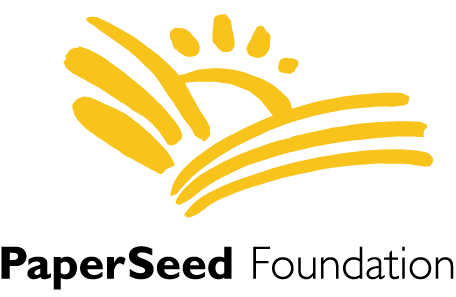Why Teaching Recycling Matters
/The PaperSeed Team recently had the privilege of joining a group of elementary students on a tour of Recology’s Recycling Center in San Francisco. For us, it was a dual-pronged tour: getting to see a recycling center in action, and seeing local youth learn first-hand what happens to the things they throw into the bins on a daily basis. To be honest, the latter was just as interesting as the former!
For some of us, recycling is a daily, automatic habit. While this is great, it’s important that we stop every now and again to be mindful of what we’re doing. For example, the Tetra Paks that are often used to store broth, juice, shelf-stable milk, etc. here in the US? We found out that they’re not recyclable due to the combination of plastic and paper; curbside pickup services take them as garbage, but not as recycling. We were horrified to find out that we were guilty of tossing Tetra Paks into our own recycling bins, assuming they were recyclable. This served as a good reminder that we can all stand to brush up on our waste knowledge now and again, especially since waste management companies are always evolving to keep up and reduce waste. (Not sure whether your local waste management company takes Tetra Paks and cartons? This handy website can help: http://www.recyclecartons.com/)
Children learn best through experiential learning, by immersing themselves in things, which is why the Recology tour is such a wonderful tool for teaching recycling and sustainable living. The three-hour tour (no relation to Gilligan’s island) started off with an introduction to the three colorful bins we’re all quite familiar with: gray for landfill, blue for recyclables, green for compost and yard waste. Rather than simply being told what goes where, students were invited to come up and challenge themselves to sort things into the correct bins in a fun, almost game show format. From there, we all put on our hard hats and day-glow vests to see waste management in action! But not before we took a pit stop to visit with their artists in residence.
Inside the artists' studio.
Part of what made the tour so interesting was the fact that Recology hosts a local artist (or two) who spend several months working on-site creating works of art from found objects. To say that their work is incredible is a profound understatement. During our visit, we were lucky enough to have two artists in the studio who explained their work and what materials they used. Weston Teruya was hard at work creating paper sculptures, including a scale model of his work space. Kate Rhoades gave us a sneak preview of her awesome puppets, carved out of foam salvaged from old sofas. We were inspired by the creativity both artists displayed, to be able to look at things that people have disposed of and whip them up into something brand new, beautiful, and sometimes functional. Both artists will showcase their work in an exhibition on May 20th and 21st.
After meeting the artists, we walked through the facility, accompanied by the roar of heavy machinery, and then visited the sculpture garden showcasing past works from artists in residence up on a little hill overlooking the facility.
Sculpture made from recycled beverage containers.
We also met an employee whose job description includes keeping hawks, which scare seagulls away from the waste to keep them from eating anything harmful. Yes, even Recology’s seagull management plan is eco friendly.
The kids learn about how hawks can keep seagulls away from harmful refuse.
Recology is by no means your ordinary waste management center. It is a place for hands-on learning, creative expression, and sharing ideas. All throughout our tour, the children ooed, ahhed, and got to test their knowledge about how we handle waste. We hope more children (and adults!) get the opportunity to visit places like these. They remind us that an object’s life doesn’t end once we throw it in a bin. In reality, there are all kinds of fates our waste products can meet: landfills, or rebirth in the form of post-consumer materials and works of art.
So, when was the last time you brushed up on your recycling knowledge? We have some resources to get you started! PaperSeed has created two unique Pinterest boards which we invite you to follow along with! One has all kinds of ideas on how we can teach kids about the environment, and the other is all about sustainable living. We also recommend you check out ZeroWaste Marin’s website, which gives tips on how to reduce junk mail and live more sustainably. Confused about how to dispose of something? Check out Earth911’s recycling guide to learn how you can recycle or responsibly dispose of virtually anything.





